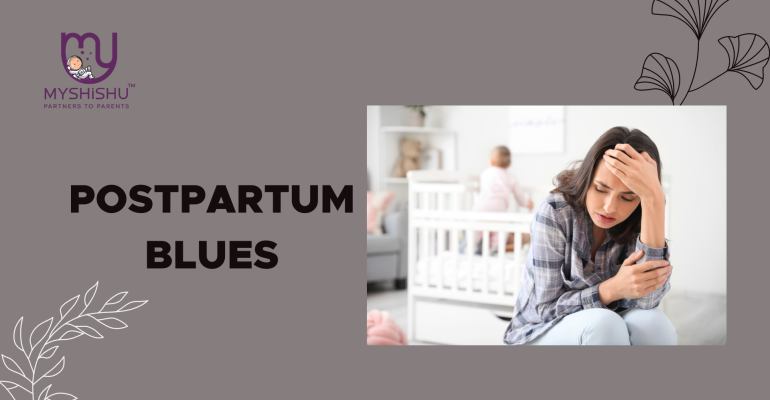Postpartum Blues After Delivery: Triumph Over the Emotional Rollercoaster
Postpartum Blues After Delivery: Triumph Over the Emotional Rollercoaster
Introduction
Welcome to the guide on postpartum blues after delivery. Congratulations on the arrival of your precious little one! As you navigate the joys and challenges of early motherhood, it’s important to acknowledge that the postpartum period can be a rollercoaster of emotions. Amidst the overwhelming joy and love you feel for your newborn, you may also experience unexpected feelings of sadness, anxiety, or mood swings. These feelings, often referred to as postpartum blues after delivery, are a common and normal part of the postpartum experience for many mothers.
In this blog, we’ll explore what postpartum blues after delivery are, why they occur, and most importantly, how you can cope with them. It’s important to know that you are not alone in experiencing these emotions, and there are strategies and support systems available to help you navigate this transitional period. So, take a deep breath, mama, and let’s dive into understanding and managing postpartum blues after delivery together.
Table of Contents
Understanding Postpartum Blues After Delivery
Postpartum blues after delivery, often referred to as baby blues, are a common and temporary emotional experience that many new mothers encounter after giving birth. It’s essential to understand that postpartum blues after delivery are a normal part of the postnatal period and affect a significant number of women. These feelings typically manifest within the first few days to weeks after childbirth and may persist for a short duration.
The exact cause of postpartum blues after delivery is not entirely clear, but hormonal fluctuations are believed to play a significant role. During pregnancy, a woman’s body undergoes substantial hormonal changes to support the growth and development of the baby. After delivery, there is a rapid decline in estrogen and progesterone levels, which can impact neurotransmitters in the brain, leading to shifts in mood and emotional well-being.
Additionally, the physical and emotional toll of childbirth, coupled with the challenges of adjusting to life with a newborn, can contribute to feelings of overwhelm, sadness, or anxiety. Factors such as sleep deprivation, pain from childbirth, concerns about breastfeeding, and changes in lifestyle and identity can further exacerbate these emotions. It’s crucial for new mothers to recognize that postpartum blues after delivery are a normal response to the profound life changes that accompany childbirth and that they are not alone in experiencing them.
Signs and Symptoms of Postpartum Blues
As you embark on this beautiful yet challenging journey of motherhood, it’s essential to recognize that the postpartum period can bring about a whirlwind of emotions such as postpartum blues after delivery. You may find yourself experiencing a rollercoaster of feelings, from moments of pure joy and elation to times when tears seem to flow uncontrollably. These emotions are all part of the process of adjusting to your new role as a mother and adapting to the changes in your life.
Here are some common signs and symptoms of postpartum blues after delivery that you may encounter along the way:
- Mood Swings: You may notice that your mood fluctuates throughout the day, with moments of happiness followed by periods of sadness or irritability: it is a symptom of postpartum blues after delivery.
- Feelings of Sadness: It’s okay to feel sad or tearful at times, even when everything seems to be going well. Your body is undergoing significant hormonal changes, which can affect your emotions as it is a sign of postpartum blues after delivery.
- Anxiety or Worry: You might find yourself worrying excessively about your baby’s health and well-being or feeling anxious about your ability to care for them as it is a symptom of postpartum blues after delivery.
- Fatigue: Adjusting to the demands of motherhood can be exhausting, both physically and emotionally. You may feel drained and overwhelmed, even if you’re getting enough rest as it is a sign of postpartum blues after delivery.
- Difficulty Sleeping: Despite feeling exhausted, you may struggle to get a good night’s sleep. Your mind may be racing with thoughts and worries, making it hard to relax and unwind as it is a sign of postpartum blues after delivery.
- Appetite Changes: Your appetite may fluctuate, with some days where you have little interest in food and others where you find yourself reaching for snacks more often than usual as it is a symptom of postpartum blues after delivery.
- Feelings of Guilt: It’s common for new moms to experience feelings of guilt or self-doubt, wondering if they’re doing enough or if they’re good mothers. Remember that you’re doing the best you can, and it’s okay to ask for help when you need it.
- Social Withdrawal: You may feel the urge to withdraw from social situations or isolate yourself from friends and family. It’s essential to stay connected and reach out for support when you need it.
Coping Strategies and Support for Baby Blues
Navigating the ups and downs of postpartum blues can feel overwhelming, but please know that you’re not alone. There are coping strategies and support systems available to help you through this challenging time:
- Lean on Your Support Network: Reach out to friends, family members, or other new moms who can offer a listening ear or a shoulder to lean on. Sometimes, simply talking about your feelings can provide immense relief from postpartum blues after delivery.
- Take Care of Yourself: Remember to prioritize self-care, even if it’s just for a few minutes each day. Take a warm bath, practice deep breathing exercises, or indulge in a favorite hobby to help alleviate stress and promote relaxation from postpartum blues after delivery.
- Get Plenty of Rest: Sleep deprivation can exacerbate feelings of fatigue and overwhelm. Try to rest whenever your baby sleeps, and don’t hesitate to ask for help with household chores or childcare so you can prioritize rest and get help for postpartum blues after delivery.
- Eat Well: Proper nutrition is essential for your physical and emotional well-being. Fuel your body with nourishing foods that provide sustained energy and support overall health and get help for postpartum blues after delivery.
- Stay Active: Gentle exercise, such as walking or yoga, can help boost your mood and reduce stress from postpartum blues after delivery. Aim for at least 30 minutes of physical activity each day, even if it’s just a short stroll around the neighborhood.
- Seek Professional Help if Needed: If your symptoms of postpartum blues after delivery persist or worsen, don’t hesitate to reach out to your healthcare provider or a mental health professional for support. They can offer guidance and resources to help you navigate this challenging time.
- Join a Support Group: Consider joining a postpartum support group where you can connect with other moms who are experiencing similar challenges of postpartum blues after delivery. Sharing your experiences about postpartum blues after delivery and receiving support from others who understand can be incredibly validating and empowering.
Remember, it’s okay to ask for help, and seeking support is a sign of strength, not weakness. You’re doing an amazing job, and with time and support, you will navigate through this challenging period and emerge stronger than ever.

Partner and Family Support for Baby Blues
Your partner and family can play a crucial role in helping you navigate through postpartum blues. Here are some ways they can offer support:
- Emotional Support: Encourage open communication with your partner about your feelings and concerns. Let them know how they can best support you during this time, whether it’s offering a listening ear, providing words of encouragement, or simply being there to hold your hand.
- Assistance with Baby Care: Share the responsibilities of caring for your newborn with your partner and family members. Having extra hands to help with feeding, diaper changes, and soothing can alleviate some of the pressure and allow you to rest and recharge.
- Household Chores: Lightening your load by tackling household chores can make a world of difference. Enlist the help of your partner and family members to take care of tasks like cooking, cleaning, and laundry so you can focus on bonding with your baby and taking care of yourself.
- Encouragement to Seek Help: If you’re struggling with postpartum blues, your partner and family can encourage you to seek professional help if needed. They can help you research support resources, accompany you to appointments, and provide ongoing encouragement and reassurance.
- Quality Time Together: Make time for moments of connection and intimacy with your partner and family. Whether it’s going for a walk together, enjoying a quiet meal, or simply cuddling on the couch, nurturing your relationships can provide comfort and emotional support during this challenging time.
- Education and Understanding: Encourage your partner and family members to educate themselves about postpartum blues and mental health. Understanding what you’re going through can help them provide more empathetic and effective support.
- Self-Care for Your Partner: Remind your partner to prioritize their own self-care during this time as well. Taking care of themselves physically and emotionally will enable them to be a better source of support for you and the entire family.
By working together as a team and offering each other compassion, understanding, and support, you can navigate through postpartum blues and emerge even stronger as a family. Remember, you’re in this together, and with love and support, you will overcome any challenges that come your way.
When to Seek Help
Knowing when to seek help is essential when dealing with postpartum blues. Here are some signs that indicate it may be time to reach out for professional support:
- Persistent Symptoms: If feelings of sadness, anxiety, or overwhelm persist for more than two weeks after giving birth, it’s important to seek help. Postpartum blues typically improve within a couple of weeks, so persistent symptoms may indicate a more serious condition, such as postpartum depression.
- Severe Symptoms: If you experience severe symptoms, such as intense sadness, hopelessness, thoughts of harming yourself or your baby, or difficulty bonding with your baby, seek help immediately. These may be signs of postpartum depression or other mental health disorders that require prompt intervention.
- Difficulty Functioning: If your symptoms are interfering with your ability to care for yourself or your baby, or if you’re having trouble carrying out daily tasks, it’s time to seek help. Difficulty sleeping, changes in appetite, and trouble concentrating are all signs that your mental health may be affecting your ability to function.
- Physical Symptoms: Physical symptoms such as extreme fatigue, unexplained aches and pains, or changes in weight can also accompany postpartum blues. If you’re experiencing physical symptoms along with emotional distress, it’s important to consult with a healthcare professional to rule out any underlying medical conditions.
- Isolation and Withdrawal: If you find yourself withdrawing from social interactions, avoiding friends and family, or feeling isolated and alone, it’s a red flag that you may need support. Connecting with others and seeking professional help can provide much-needed support and alleviate feelings of loneliness.
- Lack of Improvement: If you’ve been implementing self-care strategies and seeking support from loved ones but are not seeing any improvement in your symptoms, it may be time to consult with a healthcare provider. They can assess your situation, provide a diagnosis, and recommend appropriate treatment options.
- Intuition: Trust your instincts. If something doesn’t feel right or if you’re unsure whether your symptoms are normal, don’t hesitate to reach out for help. Your intuition can be a valuable guide in recognizing when you need additional support.
Additional Common Questions
-
How long do postpartum blues typically last?
Postpartum blues usually begin within a few days after childbirth and can last for a few weeks. They often peak around the fifth day after delivery and gradually improve on their own within two weeks. If symptoms persist or worsen beyond this timeframe, it may indicate a more serious condition like postpartum depression, and professional help should be sought.
-
What’s the difference between postpartum blues and postpartum depression?
Postpartum blues are a common and temporary emotional response to the hormonal fluctuations and life changes that accompany childbirth. Symptoms include mood swings, tearfulness, irritability, and feelings of overwhelm, but they typically resolve on their own within a few weeks. In contrast, postpartum depression is a more severe and persistent mood disorder that can significantly impair daily functioning and requires professional treatment.
-
Can postpartum blues affect bonding with my baby?
While postpartum blues can be emotionally challenging, they typically don’t interfere with the bonding process between mother and baby. Many women find that their feelings of sadness or anxiety don’t prevent them from caring for and nurturing their newborn. However, if you’re experiencing significant difficulties bonding with your baby or if you have concerns about your ability to care for them, it’s important to reach out for support from a healthcare provider or mental health professional.
-
Are there any risk factors that make me more likely to experience postpartum blues?
While postpartum blues can affect any new mother, certain risk factors may increase your likelihood of experiencing them. These include a history of mood disorders, stressful life events during pregnancy or childbirth, lack of social support, hormonal fluctuations, and sleep deprivation. If you have a history of depression or anxiety, it’s especially important to prioritize self-care and seek support during the postpartum period.
-
What can I do to support a loved one experiencing postpartum blues?
If someone you care about is struggling with postpartum blues, there are several ways you can offer support. Listen to their feelings without judgment, validate their experiences, and offer practical assistance with tasks like cooking, cleaning, or caring for the baby. Encourage them to prioritize self-care, seek professional help if needed, and remind them that they’re not alone. Your presence and understanding can make a significant difference during this challenging time.
Conclusion
In conclusion, postpartum blues are a common and typically temporary emotional response experienced by many new mothers following childbirth. While they can be challenging to navigate, especially amidst the physical and emotional changes that come with welcoming a new baby, it’s essential to remember that postpartum blues are a normal part of the postpartum experience for many women. By recognizing the signs and symptoms, understanding that they are temporary, and implementing coping strategies and seeking support when needed, mothers can effectively manage postpartum blues and transition more smoothly into their new role.
Remember, if you’re experiencing symptoms that persist or worsen over time, or if you have concerns about your mental health and well-being, don’t hesitate to reach out for help. Whether it’s confiding in a trusted loved one, seeking support from a healthcare provider or mental health professional, or accessing community resources, there are various avenues available to support you during this time. With time, patience, and support, you can navigate through postpartum blues and focus on bonding with your baby and adjusting to your new life as a mother.

Want to know more
Explore Our Courses











